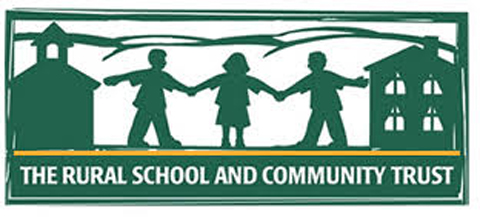WASHINGTON, D.C. – Despite greater attention to rural America after the 2016 presidential election and bold promises from many state-level and national leaders, many children and families in rural America still don’t have the educational resources and opportunities they deserve, says report authored by
That’s among the findings of the Rural School and Community Trust’s new 50-state report on rural education, Why Rural Matters, 2018-2019: The Time Is Now, which shows that nearly 7.5 million students were enrolled last year in rural school districts—nearly one in seven public school students in the United States. About one in six of those rural students were living below the poverty line, says a news release by the trust.
Klein is Associate Professor of Mathematics and a 2019-20 American Council on Education (ACE) Fellow at Ohio University. , Associate Professor of Mathematics at Eastern Mennonite University, earned an M.S. in Mathematics from the College of Art & Sciences at Ohio University in 2011, followed by a Ph.D. in Math Education from the Patton College of Education at OHIO in 2014. Dr. Sara Hartman, Assistant Professor of Teacher Education at Ohio University, received her Bachelor of Science degree from Ohio University in Elementary Education in 1997. Dr. Jerry Johnson, Chair of Educational Leadership Department and Lydia E. Skeen endowed professor of Kansas State University, earned a Doctor of Education in educational administration from Ohio University.
When counted as the number who attend rural schools, including those in districts classified as non-rural by the National Center for Education Statistics, more than 9.3 million students attended a rural school. That’s nearly one in five U.S. students and more students than in the nation’s 85 largest school districts combined.
“While some rural schools thrive, others and their communities continue to face devastating obstacles in the education and well-being of children,” said Robert Mahaffey, the executive director of the Rural School and Community Trust. “Leaders in every state and our nation’s capital must work together to better address the issues facing rural students, schools, and communities with great haste.”
Key highlights from the new report, which includes state-by-state data, maps, and more:
- The top 10 highest-priority states with the greatest needs in rural education, across a wide array of measures: 1) Mississippi, 2) Alabama and North Carolina (tied), 4) Oklahoma, 5) South Dakota, 6) West Virginia, 7) Georgia, 8) South Carolina, 9) Louisiana, and 10) Florida.
- In 12 states, at least half of public schools are rural: Montana, South Dakota, Vermont, North Dakota, Maine, Alaska, Oklahoma, Nebraska, Wyoming, New Hampshire, Iowa, and Mississippi. At least one-third of schools are rural in 14 other states.
- About half of rural students in the U.S. live in 10 states: Texas has the most rural students (694,000), followed by North Carolina, Georgia, Ohio, Tennessee, New York, Pennsylvania, Virginia, Alabama, and Indiana.
- A majority of rural students live in states where they represent less than 25 percent of school enrollment. The national median enrollment for rural districts is only 494 students.
- In 23 states, half of rural districts enroll fewer than 494 students. In Montana, North Dakota, and Vermont, 90 percent of rural districts have fewer than 494 students.
- Only 9.5 percent of the nation’s rural students passed Advanced Placement (AP) courses in 2018-19, compared with 19 percent of all U.S. high school students, 18.8 percent of urban students, and 24.1 percent of suburban students.
- Rural students outscored non-rural students on the latest National Assessment of Educational Progress (NAEP) in a majority of states with available data. Rural achievement is very low in some states, however, relative to non-rural districts; it’s lowest in Hawaii and highest in Rhode Island.
- The gap in achievement between rural students in poverty and rural students not in poverty was greatest in Maryland, Mississippi, and Washington–and narrowest in Pennsylvania, Arkansas, and
- Many states provide a larger proportion of funding for rural districts because of the higher costs in many small and rural schools, but 12 states provided less funding proportionately, including Nebraska, Vermont, Iowa, Wisconsin, Michigan, Massachusetts, California, and Ohio.
- A national average of $6,367 is spent by states on the instruction of each student in rural schools, ranging from state averages of $4,118 in Idaho and $4,737 in Oklahoma to $14,380 in Alaska and $13,226 in New York. An astonishing 33 states on average spend less than half the amount of Alaska on instruction for each rural student. Texas also invests relatively low amounts on instruction for each rural student ($5,386).
- Many states in the Midwest/Great Plains regions invest relatively high amounts for each rural student’s instruction, but about $3,500 less than most Northeastern states.
- Even when adjusted for comparable local wages, average educator salaries in rural districts vary widely: Kansas had the nation’s lowest average of $54,454, Alaska the highest at $102,736. States with the lowest average salaries for rural educators: Kansas, Arkansas, Oklahoma, Florida, Missouri, Mississippi, North Dakota, South Dakota, Colorado, Arizona, Tennessee, and The highest were in: Alaska, New York, Rhode Island, Connecticut, and Wyoming.
- Only in North Carolina, Oklahoma, and Nevada are two randomly-chosen students from a rural school more likely to be of different racial/ethnic backgrounds than of the same background.
- Communities surrounding schools in rural districts were poorest on average in New Mexico and wealthiest in Connecticut.
- Kentucky and Texas each climbed by more than 10 places in their priority rankings. Nevada and Utah had the largest drops but still have considerable rural needs.
Why Rural Matters is published with support from the College Board. The Rural School and Community Trust retains control over all findings and content.





















Comments